State of Emergency in Kandy
(vero;2018-Oct-13)
As we were leaving our guest house in Haputale on March 7th our host warned us in passing that there were “problems” in Kandy. We asked for details but his English was not so good and he did not seem to know much more, just that tourists were OK and we should not worry. So although we were a bit puzzled we left without thinking much more about what he had just said.
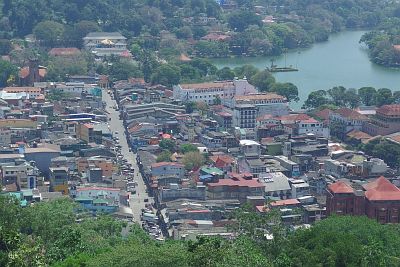 Once settled in Kandy, our new host told us that most shops and eateries in his neighbourhood were closed today because of the “problems” and he suggested that we have dinner downtown before returning to our room. He was quite vague about the “problems” and we wondered a bit but since he did not seem particularly worried, we just thanked him for his advice and set off to the city centre.
Once settled in Kandy, our new host told us that most shops and eateries in his neighbourhood were closed today because of the “problems” and he suggested that we have dinner downtown before returning to our room. He was quite vague about the “problems” and we wondered a bit but since he did not seem particularly worried, we just thanked him for his advice and set off to the city centre.
Our guest house was a good 40-minute walk from the centre in a residential area and as we made our way into town we noticed that there was indeed something peculiar in the air. This had not struck us on our way up: at that time, we were bent on finding the way and arriving quickly, plowing our way up and down the hills, concentrating on reaching our destination and we did not immediately notice anything strange. But now, with time and leisure we could feel that something was amiss. The streets were really quiet with no traffic, being cars or people. We headed to the train station and noticed that the adjacent bus station was eerily empty. All shop iron shutters were drawn, no street hawkers in sight, there was hardly anybody on the streets.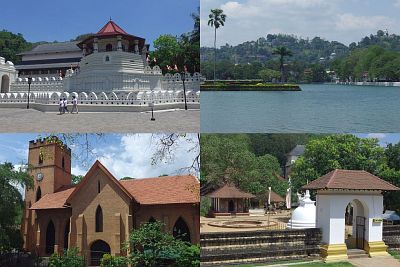
We continued from the station to the lake and the temple area but here as well, all shops were closed and there were only tourists walking around: we were all wondering but nobody seemed to know what was really going on, only that we all had been told that tourists were safe. It felt very weird. We quickly realised that were was no chance for us to get a meal downtown. We were discussing our options when we had a stroke a genius: the seemingly only functioning place in this strange town was the railway station and they surely had a kind of restaurant on their premises? Off we went and indeed there was a cafeteria on the first floor where they were serving rice and curry. The people were very friendly, the man in charge spoke a bit of English and we could ask him a few questions.
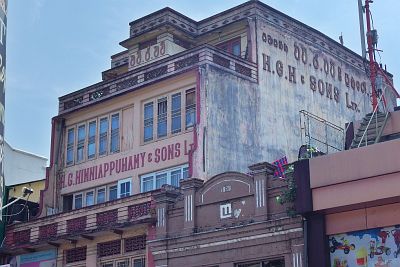 He told us that it had all begun about 40 km east of Kandy in the town of Medamahanuwara. A Sinhalese (Buddhist) lorry driver had brushed a tuk tuk while overtaking and broken its outside mirror without bothering to stop. There had been four young drunk (?) Muslims in the tuk tuk and they had followed the driver to his home where they had beaten him so hard that he had died in hospital of his wounds. An awful case of road rage. But it had gotten worse: when the story had started to spread, Sinhalese mobs had gathered throughout the province and started to attack and loot Muslim shops and homes as retaliation.
He told us that it had all begun about 40 km east of Kandy in the town of Medamahanuwara. A Sinhalese (Buddhist) lorry driver had brushed a tuk tuk while overtaking and broken its outside mirror without bothering to stop. There had been four young drunk (?) Muslims in the tuk tuk and they had followed the driver to his home where they had beaten him so hard that he had died in hospital of his wounds. An awful case of road rage. But it had gotten worse: when the story had started to spread, Sinhalese mobs had gathered throughout the province and started to attack and loot Muslim shops and homes as retaliation.
We went back to our guest house in dark, silent and empty roads. We asked our host for more details and he told us that there was a curfew in place since 6 p.m. (we did not know) and that a state of emergency had been declared the day before (March 6th) which is why we hardly saw anybody on the streets.
The next day March 8th, there was no Internet. When it returned, we found out that all social sites such as Facebook, Twitter or WhatsApp had been blocked to prevent people from communicating and gathering. On this day the curfew was lifted at 10 a.m. and as we walked down to the centre we noticed that people seemed to feel more confident, daring to leave their homes.
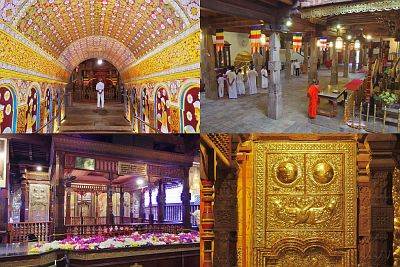 We spoke to Muslim men, particularly a shop owner who had decided to re-open his shop. He was sad and angry about what happened. To make his point he told us further stories about how a Muslim restaurant owner had allegedly been caught in the act of putting “sterilisation pills” into the food of Sinhalese diners. Can you believe he asked that somebody would do such a stupid thing? And he lamented that such lies were enough to start further riots from the Sinhalese against the Muslim minority. And to top it all, he said, the police had taken much too much time to react and protect the Muslim population; they had even publicly apologised afterwards. Wasn't it proof enough? But it was too late, there was trouble everywhere.
We spoke to Muslim men, particularly a shop owner who had decided to re-open his shop. He was sad and angry about what happened. To make his point he told us further stories about how a Muslim restaurant owner had allegedly been caught in the act of putting “sterilisation pills” into the food of Sinhalese diners. Can you believe he asked that somebody would do such a stupid thing? And he lamented that such lies were enough to start further riots from the Sinhalese against the Muslim minority. And to top it all, he said, the police had taken much too much time to react and protect the Muslim population; they had even publicly apologised afterwards. Wasn't it proof enough? But it was too late, there was trouble everywhere.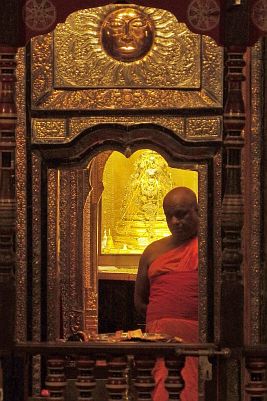
We did not know what to think but one thing dawned on us: it is not everything so peaceful and smiling in this Buddhist country as tourists might be led to believe. We were beginning to see a pattern similar to what we had observed in Myanmar: an underlying readiness to violence betraying religious conflicts with Buddhist radical groups acting violently against minorities like the Muslims in Kandy.
We continued our way and once in the centre saw that the situation had much improved: all banks were open, some restaurants also although they were running a minimum service with just a few dishes and their curtains half drawn, ready to shut at the first hint of trouble. There were more people on the streets but still very few cars around, which was in one way good and enabled us to have a quiet look at the houses and walk pleasantly through the town. All in all we keep a good memory of this untypical visit of Kandy and have never ever felt threatened or in danger while strolling through the town, being the touristy city centre or the residential area where our guest house was located.
The only drawback was that all museums were closed, which meant that although we paid full price to attend the big evening puja at the Temple of the Sacred Tooth Relic, we only saw the inner temple and could not get into the adjacent museums. But still, attending the puja was an interesting experience and we did not regret having bought our ticket.
We left Kandy for Sigiriya by bus the next morning (March 9th) and did not come into any incidents hinting at a state of emergency being enforced during the whole rest of our stay in Sri Lanka. Not a big surprise in the touristy places of the Ancient Cities which feel like bubbles in a world of their own but even in bigger towns such as Anuradhapura, Jaffna, Colombo and Negombo, we would have never thought that there were problems in the country hadn't we been in Kandy a few days before.
However, when we returned to our guest house in Negombo for our last two nights in Sri Lanka, it was empty and our hosts bitterly complained about all cancellations they had received because of the state of emergency and the panic reaction of foreign tourists. We felt with them as we reckoned that this was indeed an overreaction, but as always, our media are quick to paint a situation darker as it is in reality and tourists get scared. A shame for our friendly hosts.
The state of emergency was eventually lifted on March 18th. Once back in the UK we searched the Internet to get an idea of what really happened since all we knew was from the few Sri Lankans who had been kind enough to speak with us. You may want to read this Wikipedia article for more background.
Want to read more? Go back to Lanka's Hill Country or go on to Jaffna Town and Islands or go up to Blog
$ updated from: Blog.htxt Mon 28 Apr 2025 14:55:28 trvl2 — Copyright © 2025 Vero and Thomas Lauer unless otherwise stated | All rights reserved $



